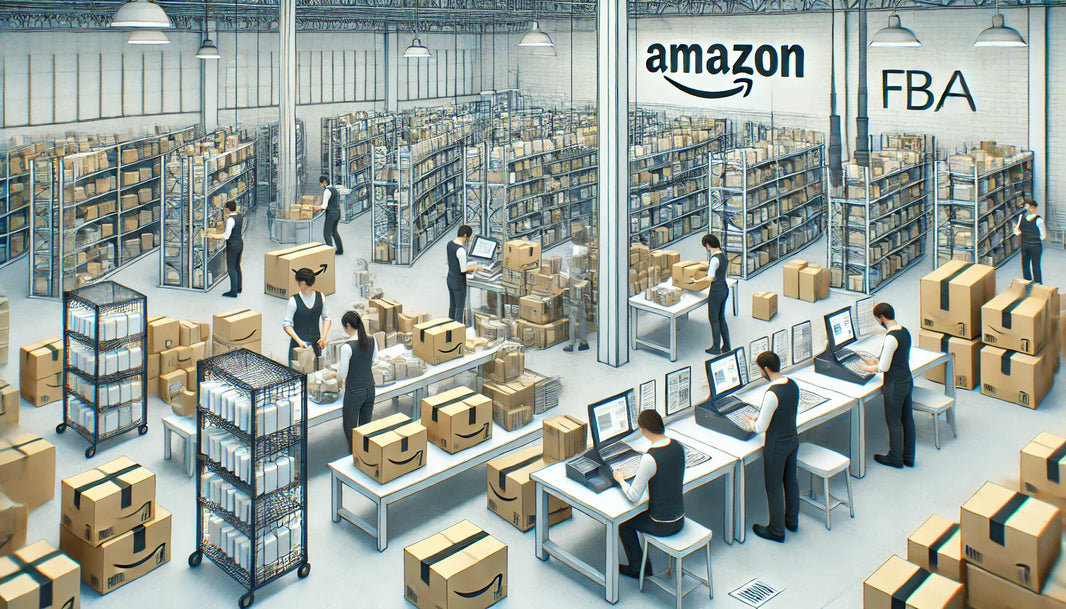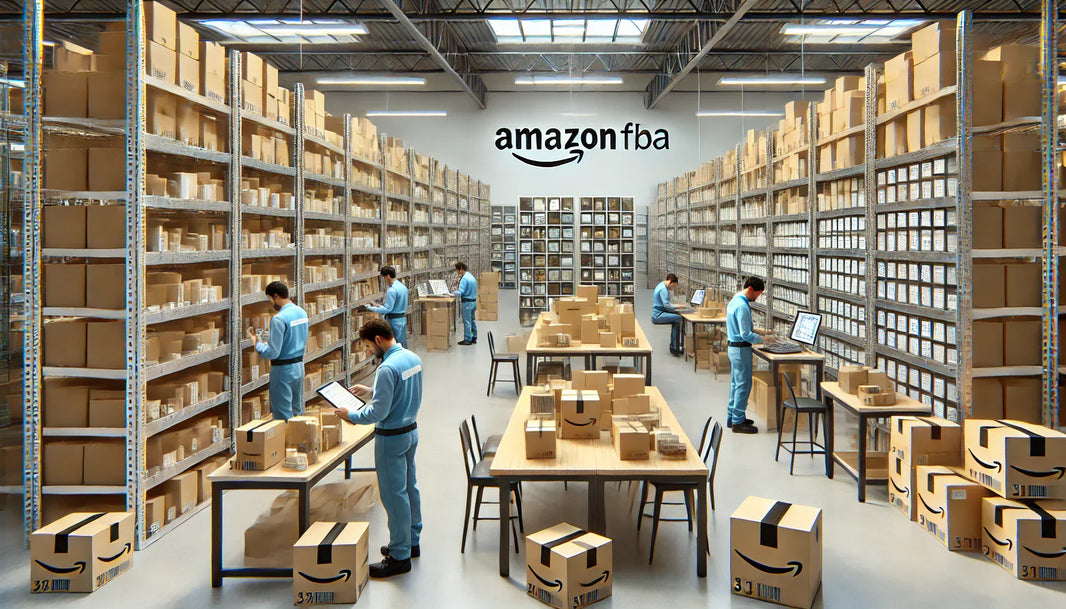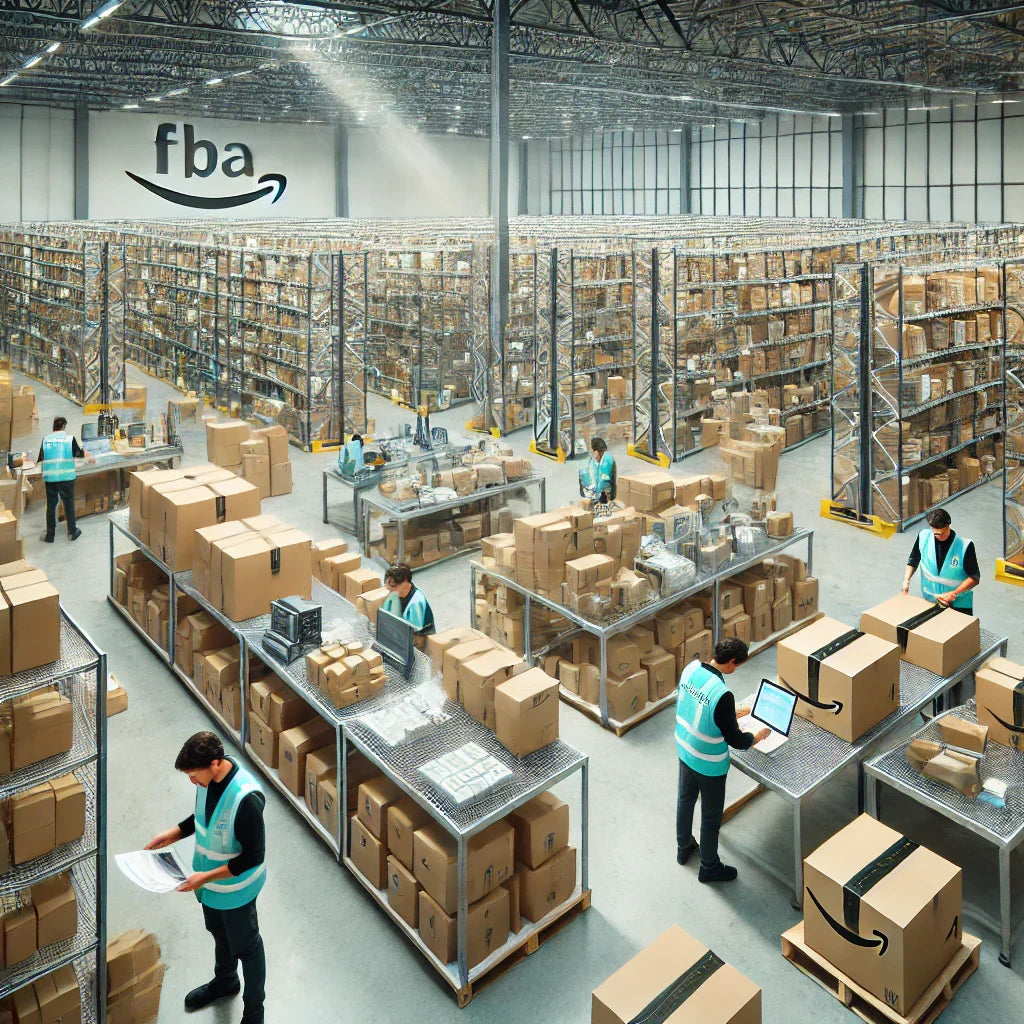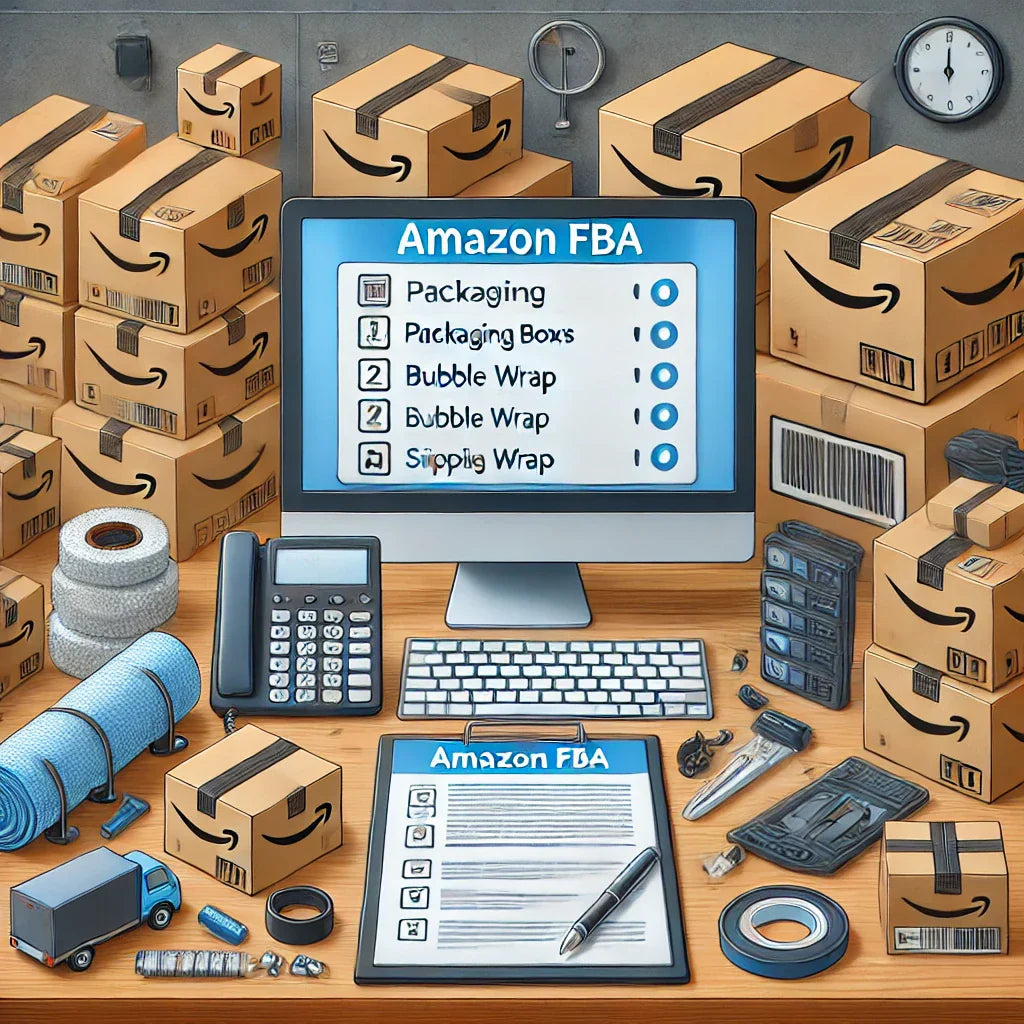In today's rapidly evolving global market, regional distribution centers (RDCs) have become pivotal in the effective management of modern supply chains. These strategically located hubs enable businesses to streamline their operations by ensuring efficient product storage, expedited distribution, and seamless coordination with other parts of the supply chain. With increasing competition and heightened consumer expectations for faster delivery, the importance of RDCs continues to grow, enhancing both flexibility and scalability in distribution networks. Understanding the role and benefits of regional distribution centers helps businesses optimize their logistics strategies and maintain a competitive edge.

Understanding the Function of Regional Distribution Centers
Regional distribution centers are warehouses or storage facilities positioned within specific geographical locations to support the swift and efficient distribution of goods. Unlike centralized warehouses that serve broader regions, RDCs focus on local markets, enabling faster transit times and cost-effective operations. These centers are essential in reducing transportation costs and enhancing service levels by positioning inventory closer to end customers.
An RDC’s function extends beyond mere storage; it serves as an integral point for inventory management, order fulfillment, and the consolidation of shipments. By optimizing inventory levels and aligning stock with demand patterns, businesses can reduce excess inventory and improve turnover rates. This operational efficiency significantly impacts the overall productivity of supply chains, reinforcing the value of RDCs.
Key Advantages of Integrating Regional Distribution Centers
-
Enhanced Delivery Speed and Customer Satisfaction
In a consumer-driven economy, speed is synonymous with quality service. Regional distribution centers allow businesses to offer faster shipping times by minimizing the distance between product origin and customer. This improvement in delivery speed not only boosts customer satisfaction but also strengthens customer loyalty, positioning a company as a reliable and responsive service provider.
E-commerce giants have set the benchmark for fast and free shipping, forcing other companies to adapt or risk falling behind. RDCs facilitate this adaptation by acting as local nodes that support same-day or next-day delivery options. This competitive advantage becomes particularly valuable during peak shopping seasons, where the demand for quick order fulfillment is highest. -
Reduced Transportation Costs and Fuel Efficiency
Transportation expenses often account for a substantial portion of supply chain costs. By leveraging RDCs, businesses can minimize long-distance hauls and optimize local delivery routes. This strategic positioning leads to significant cost savings in fuel and labor while contributing to environmental sustainability through reduced carbon emissions.
Fuel efficiency not only impacts the bottom line but also aligns with corporate sustainability goals, which are increasingly important to consumers and stakeholders. An eco-friendly approach, supported by shorter delivery routes from RDCs, positions companies as responsible participants in the global supply chain landscape. -
Flexibility and Adaptability in Operations
One of the key challenges in supply chain management is responding to fluctuating market conditions. Regional distribution centers offer the flexibility to adjust inventory levels and distribution patterns based on real-time data and forecasts. This adaptability is crucial for mitigating risks associated with supply disruptions or sudden changes in consumer demand.
For instance, during unforeseen events like natural disasters or political disruptions, RDCs allow companies to reroute shipments and shift inventory to alternative centers, ensuring that the flow of goods remains uninterrupted. This dynamic approach to distribution enhances resilience and protects the business from potential losses.
The Strategic Positioning of Regional Distribution Centers
Choosing the optimal location for a regional distribution center requires careful consideration of several factors. These include proximity to major transportation hubs, access to key customer bases, and regional demand trends. Ideally, RDCs should be located near highways, ports, or airports to facilitate seamless inbound and outbound logistics.
The integration of advanced analytics tools assists supply chain managers in determining the best locations for RDCs by analyzing data related to customer demographics, transportation costs, and market potential. This data-driven approach ensures that the investment in an RDC yields maximum returns and aligns with the company’s growth objectives.
Impact of Technology on Regional Distribution Centers
The digital transformation in the supply chain industry has amplified the operational efficiency of RDCs. Modern distribution centers increasingly employ technologies such as warehouse management systems (WMS), automation, and real-time tracking tools to optimize workflow and enhance accuracy.
-
Warehouse Management Systems (WMS)
A robust WMS allows for precise inventory tracking, faster order processing, and efficient space utilization within RDCs. This technology integrates with other supply chain systems to provide real-time visibility of inventory levels and streamline fulfillment processes. With WMS, companies can reduce human errors and improve the overall performance of their distribution centers. -
Automation and Robotics
Automation has redefined the role of regional distribution centers by speeding up tasks that previously required significant manual labor. The use of conveyor systems, automated storage and retrieval systems (AS/RS), and robotic picking arms ensures that processes are faster and less prone to human error. This leads to higher productivity and a more reliable output, ultimately driving down operational costs. -
Real-Time Tracking and Data Analytics
Implementing real-time tracking systems helps RDCs maintain a pulse on inventory movement and shipment status. Advanced data analytics provides insights into performance metrics, allowing managers to make informed decisions about inventory adjustments and process improvements. These insights facilitate proactive management, helping to anticipate challenges before they impact operations.
Challenges in Managing Regional Distribution Centers
While regional distribution centers offer numerous benefits, they come with their own set of challenges. Effective management of RDCs requires addressing issues related to staffing, technology integration, and coordination across multiple locations.
-
Workforce Management
The efficient operation of an RDC depends on a well-trained workforce that understands the complexities of logistics. Finding and retaining skilled employees can be a challenge, particularly in regions where competition for labor is high. Investing in training programs and offering competitive wages are essential strategies for overcoming this issue. -
Technology Implementation
Integrating new technology into existing systems can be a daunting task. Companies need to ensure that their technological investments are scalable and compatible with their broader supply chain infrastructure. This often requires significant financial resources and time for implementation and training, which can strain smaller businesses. -
Coordination Across Distribution Networks
Managing multiple RDCs across different regions necessitates seamless coordination to maintain uniform service levels. This involves synchronizing inventory data, standardizing processes, and establishing clear communication channels. Ensuring that all distribution centers operate cohesively can be complex, particularly as the scale of operations grows.

The Role of Regional Distribution Centers in E-Commerce
E-commerce has been a driving force behind the surge in demand for regional distribution centers. Online retailing requires faster delivery times, which RDCs are uniquely equipped to provide. By decentralizing inventory through a network of regional centers, e-commerce companies can meet customer expectations and manage high order volumes efficiently.
Moreover, RDCs enable e-commerce businesses to scale their operations by adding new locations as needed. This flexibility supports growth while maintaining consistent service levels across diverse geographical areas. RDCs thus play an indispensable role in sustaining the rapid pace of e-commerce and enhancing the customer experience.
The Future of Regional Distribution Centers
As the landscape of global trade continues to evolve, the role of regional distribution centers will become even more integral. Emerging technologies like artificial intelligence (AI), blockchain, and the Internet of Things (IoT) are expected to further revolutionize RDC operations.
-
Artificial Intelligence (AI)
AI can enhance decision-making by predicting demand patterns and optimizing inventory distribution. Predictive analytics powered by AI helps businesses allocate resources more effectively and avoid stockouts or overstock situations. -
Blockchain Technology
Blockchain offers a secure way to track goods as they move through the supply chain. This transparency ensures that products arriving at RDCs have been accounted for throughout their journey, reducing the risk of fraud and improving traceability. -
Internet of Things (IoT)
IoT-enabled devices in RDCs provide real-time data on environmental conditions, equipment status, and inventory location. This connectivity allows for better monitoring and maintenance, ensuring that the facility operates smoothly and efficiently.
Innovative Practices in Regional Distribution Centers
To maintain their competitive edge, regional distribution centers are integrating innovative practices that enhance efficiency and sustainability. Companies are exploring ways to maximize space utilization, incorporate green initiatives, and foster collaboration across the supply chain ecosystem. Here, we delve deeper into these practices and their implications for RDC operations.
-
Space Optimization Strategies
Effective use of space within RDCs is critical for accommodating fluctuating inventory levels and streamlining operations. Innovative layout designs such as vertical racking systems and modular shelving have allowed distribution centers to optimize square footage without the need for expansion. By building vertically rather than horizontally, RDCs can store more products while maintaining easy access for picking and packing.
The use of dynamic slotting, where products are stored based on their picking frequency, has also contributed to space optimization. This practice reduces the time required for order picking and boosts overall efficiency. Warehouse management systems play a significant role in supporting these strategies by providing real-time data that helps in reorganizing inventory to meet changing demand patterns. -
Sustainability and Green Initiatives
Sustainability has become a major focus for regional distribution centers as companies seek to align their operations with environmentally responsible practices. RDCs are adopting measures to reduce their carbon footprint through energy-efficient lighting, the installation of solar panels, and the use of electric or hybrid vehicles for local deliveries. Additionally, green building certifications such as LEED (Leadership in Energy and Environmental Design) are being pursued by companies to demonstrate their commitment to eco-friendly practices.
Waste reduction is another aspect of sustainable operations in RDCs. By employing waste management programs and recycling materials such as packaging, companies can minimize their environmental impact and promote a circular economy. The adoption of reusable containers and pallets is a prime example of how distribution centers are rethinking traditional supply chain practices to prioritize sustainability. -
Collaborative Supply Chain Ecosystems
The interconnected nature of modern supply chains requires RDCs to work collaboratively with suppliers, manufacturers, and transportation partners. By fostering strong relationships and sharing data across the supply chain, RDCs can improve coordination and responsiveness. Collaborative planning, forecasting, and replenishment (CPFR) is one strategy that enhances transparency and allows for more accurate demand planning.
Partnerships with third-party logistics providers (3PLs) are also on the rise, enabling companies to leverage the expertise and resources of established logistics firms without having to build their own infrastructure. This collaborative approach enhances flexibility and scalability, ensuring that regional distribution centers can meet peak demand without incurring excessive costs.
Leveraging Data-Driven Insights in RDC Operations
Data is at the heart of efficient regional distribution center operations. The collection and analysis of data empower supply chain managers to make informed decisions that drive productivity and cost savings. Here’s how data-driven insights are reshaping RDC management:
-
Predictive Analytics for Demand Forecasting
Understanding future demand trends is essential for stocking the right products in the right quantities. Predictive analytics harness historical data, current market conditions, and external factors such as economic indicators to forecast future demand. This allows RDCs to manage their inventory more effectively, minimizing the risk of overstocking or stockouts. Companies that use predictive analytics can better align their inventory strategies with customer expectations, ensuring that they remain responsive and competitive. -
Real-Time Monitoring for Enhanced Efficiency
Real-time monitoring tools allow RDCs to track the movement of goods within the facility and throughout the supply chain. These tools provide visibility into critical metrics such as order status, processing times, and delivery timelines. If delays or bottlenecks occur, real-time data enables immediate corrective actions, reducing the impact on overall operations.
This level of insight is particularly beneficial for maintaining service levels during periods of peak demand. For example, during the holiday season or major sales events, RDCs equipped with real-time monitoring systems can handle increased order volumes more efficiently, mitigating potential issues that could disrupt fulfillment. -
Inventory Management and Optimization
Sophisticated inventory management systems use data analytics to determine optimal stock levels for each product. This helps avoid the problems associated with excess inventory, such as increased storage costs and potential waste, as well as issues related to stockouts that can lead to missed sales and dissatisfied customers. By integrating data from multiple sources—including point-of-sale data, historical sales figures, and seasonal trends—RDCs can create more accurate and adaptive inventory models.
The Role of RDCs in Global Supply Chain Resilience
As supply chain disruptions become more frequent due to global challenges like geopolitical tensions, pandemics, and natural disasters, the resilience offered by regional distribution centers is crucial. RDCs contribute to the adaptability and robustness of the supply chain in several key ways:
-
Decentralization of Inventory
One of the primary advantages of RDCs is their ability to decentralize inventory. When products are stored in multiple regional locations, the risk associated with supply chain disruptions is reduced. For example, if a distribution center in one region is impacted by a natural disaster or logistical bottlenecks, other RDCs in unaffected areas can pick up the slack and continue to fulfill orders. This decentralized approach ensures a more continuous flow of goods and services, enhancing overall supply chain resilience. -
Redundancy and Contingency Planning
RDCs allow companies to implement redundancy strategies by storing similar products across different locations. This redundancy ensures that if one facility faces operational challenges, another center can fulfill orders without significant delays. Coupled with robust contingency planning, RDCs become instrumental in maintaining service levels during unexpected disruptions.
Effective contingency planning involves defining alternative routes for transportation, setting up agreements with multiple carriers, and establishing emergency protocols for inventory reallocation. The agility afforded by these measures makes regional distribution centers a cornerstone in building a resilient supply chain that can withstand unforeseen events. -
Support for Multi-Modal Transportation
RDCs are often strategically located to take advantage of various transportation modes, including road, rail, air, and sea. This flexibility allows companies to adapt their distribution strategies based on current market conditions and potential disruptions. For instance, if a particular shipping route becomes unavailable or faces delays, the presence of RDCs near alternative transportation hubs enables companies to shift modes seamlessly.

Emerging Technologies Shaping the Future of RDCs
The adoption of cutting-edge technologies is driving the evolution of regional distribution centers and shaping their future. The integration of artificial intelligence, blockchain, and robotics is transforming RDC operations into highly efficient and transparent processes.
-
Artificial Intelligence (AI) for Process Optimization
AI technologies are revolutionizing how RDCs function by automating complex decision-making processes. Machine learning algorithms analyze patterns in data to optimize picking and packing routes, reduce idle times, and suggest improvements in inventory placement. AI-powered tools can also forecast maintenance needs for warehouse equipment, helping prevent costly downtimes. -
Blockchain for Enhanced Transparency
Blockchain technology is poised to enhance supply chain transparency by providing a secure, immutable ledger for tracking product movement. This is particularly useful for RDCs that handle high-value or perishable goods, as it ensures that all participants in the supply chain can verify the authenticity and condition of shipments. The implementation of blockchain can help RDCs maintain compliance with industry regulations and build trust with partners and consumers. -
Robotics for Automated Order Fulfillment
Robotics is an area where many RDCs are investing heavily to improve efficiency. Automated guided vehicles (AGVs) and robotic picking systems are increasingly common in modern distribution centers. These robots reduce human error, expedite the fulfillment process, and allow RDCs to handle a higher volume of orders with fewer resources.
Collaborative robots, or cobots, work alongside human employees to increase productivity without replacing the human workforce. By taking on repetitive or physically demanding tasks, cobots enable workers to focus on more complex responsibilities, enhancing job satisfaction and reducing the risk of injuries.
The Economic Impact of Regional Distribution Centers
The presence of RDCs has a significant economic impact on both local and national scales. By creating jobs, fostering economic development, and supporting businesses in reaching their customers more efficiently, RDCs contribute to economic growth in numerous ways.
-
Job Creation and Workforce Development
Regional distribution centers provide employment opportunities for a wide range of roles, including warehouse workers, logistics coordinators, and supply chain analysts. These centers often become major employers within their regions, helping to reduce local unemployment rates. Furthermore, the demand for skilled workers encourages workforce development initiatives that equip employees with the necessary skills for careers in logistics and supply chain management. -
Economic Stimulus for Surrounding Communities
The establishment of an RDC can stimulate the local economy by attracting related businesses such as transportation services, equipment suppliers, and maintenance companies. This network effect leads to a robust economic ecosystem that supports sustained growth and development. -
Support for Small and Medium-Sized Enterprises (SMEs)
RDCs also benefit smaller businesses by providing shared logistics services that might otherwise be too costly for SMEs to implement independently. This enables smaller companies to compete with larger players by leveraging the scale and efficiency of regional distribution networks.
Balancing Cost and Service Level Expectations
Maintaining a balance between operational costs and service level expectations is a continuous challenge for regional distribution centers. Companies must find ways to offer exceptional service while keeping overhead low. Here’s how they manage this balance:
-
Strategic Cost Management
Cost management strategies include optimizing labor costs through workforce planning, investing in energy-efficient technologies, and reducing waste through effective inventory management. Automation plays a crucial role in maintaining this balance by reducing the need for labor-intensive processes and minimizing human error. -
Customer-Centric Approaches
Customer satisfaction remains a priority, and RDCs must align their operations to meet or exceed service level agreements (SLAs). Offering features such as same-day delivery and real-time tracking comes at a cost, but customers are often willing to pay a premium for these services. Finding the right price point that covers operational expenses while appealing to customer expectations is key to maintaining profitability.
Continuous improvement and adaptation are fundamental for regional distribution centers seeking to balance cost efficiency and high service levels. RDCs achieve this through various methodologies and frameworks, such as Lean management and Six Sigma, which focus on eliminating waste and enhancing process efficiency.
Training and Development of the Workforce
The workforce within regional distribution centers is a crucial element that influences their operational success. Training and development programs are essential to keep the workforce equipped with the skills necessary to handle modern technology and complex logistics processes.
-
Employee Upskilling and Cross-Training
Upskilling employees ensures that the workforce stays proficient in handling new technologies such as warehouse management systems and robotics. Cross-training programs that allow workers to become proficient in multiple roles enhance workforce flexibility and ensure that RDCs can maintain productivity during peak seasons or when there are staff shortages. Cross-training also promotes a culture of shared responsibility, leading to better teamwork and increased job satisfaction. -
Safety Training and Compliance
Safety is a top priority in RDCs, given the physical nature of many tasks. Comprehensive safety training programs help reduce workplace incidents, ensuring that workers can perform their roles confidently and without undue risk. Compliance with local labor laws and occupational safety standards is not only a legal requirement but also a strategic advantage. A safe work environment reduces turnover and attracts top talent, which is particularly valuable in competitive labor markets. -
Leadership Development Programs
Investing in leadership development within RDCs can yield long-term benefits. Team leaders and managers who understand the intricacies of logistics operations are better equipped to make strategic decisions and drive efficiency. Leadership programs that emphasize communication, problem-solving, and decision-making can prepare the next generation of RDC managers to tackle complex challenges and adapt to changes in the supply chain landscape.
Adapting to Seasonal Demand Fluctuations
Seasonal demand presents a unique challenge for regional distribution centers. The ability to scale operations up or down based on demand is essential for maintaining efficiency and service quality throughout the year.
-
Flexible Workforce Solutions
Hiring temporary staff during high-demand periods, such as holiday seasons, helps RDCs manage increased workloads without overextending their permanent workforce. Partnering with staffing agencies can streamline the recruitment process for temporary positions, allowing RDCs to quickly scale up their workforce when necessary. However, this requires effective training programs to ensure temporary workers are productive from day one. -
Inventory Strategy Adjustments
Seasonal surges often require adjustments to inventory management strategies. RDCs must balance stock levels to meet demand without creating excess inventory that could lead to storage constraints and increased costs. Strategies such as forward stocking, where high-demand items are moved to strategic locations closer to major markets, can help mitigate potential supply chain delays and support efficient order fulfillment.
Moreover, demand forecasting tools that analyze past sales data, current market trends, and external variables enable RDCs to better predict seasonal fluctuations. These tools can inform decisions about product reallocation and inventory buildup, ensuring that the center remains adequately stocked without incurring unnecessary expenses.
![]()
The Integration of Sustainable Practices
The push for sustainability in regional distribution centers extends beyond energy-saving measures and green building certifications. It also encompasses waste reduction, responsible sourcing, and the promotion of ethical practices throughout the supply chain.
-
Sustainable Packaging Solutions
RDCs are rethinking packaging practices to reduce waste and promote recycling. Biodegradable and recyclable packaging materials are increasingly used as an eco-friendly alternative to traditional plastics. Additionally, reducing the size of packages through efficient design can minimize material use and cut down on transportation costs by optimizing space within delivery vehicles. -
Energy Management Systems
Implementing energy management systems allows RDCs to monitor and optimize their energy usage, contributing to lower operating costs and a reduced environmental impact. Advanced sensors and smart meters help track energy consumption in real-time, enabling quick adjustments to improve efficiency. These systems can be integrated with other warehouse technologies to automate lighting, heating, and cooling based on current operational needs. -
Sustainability Partnerships
Forming partnerships with sustainability-focused organizations helps RDCs keep pace with environmental regulations and consumer expectations. Working with eco-friendly suppliers and transportation partners enhances the overall sustainability of the supply chain and positions RDCs as leaders in environmental responsibility. This proactive approach not only meets compliance standards but also appeals to environmentally conscious consumers who prioritize sustainable brands.
Resilience Through Diversification
Diversification within the operations of regional distribution centers plays a pivotal role in their long-term sustainability. Diversified strategies include the expansion of service offerings, investments in different types of technology, and entering new markets.
-
Expansion of Service Offerings
RDCs are moving beyond traditional storage and distribution services to include value-added services such as product customization, assembly, and kitting. These services enhance customer satisfaction by offering tailored solutions that meet specific client needs. Providing such offerings can differentiate RDCs from competitors and create new revenue streams. -
Investment in Diverse Technologies
While foundational technologies such as WMS and automation are crucial, RDCs are also exploring new avenues like augmented reality (AR) and virtual reality (VR) for staff training and operational planning. AR can assist workers in locating items within the warehouse, reducing search times and errors. VR training programs can simulate real-world scenarios, allowing workers to learn and practice without the risks associated with on-the-job training. -
Entering Emerging Markets
Expanding RDC networks into emerging markets provides opportunities for growth and diversification. These markets often have untapped potential and can help RDCs reach new customer bases. The expansion may involve partnerships with local logistics providers to navigate unfamiliar regulatory and market landscapes effectively.
Collaborative Robotics and Human Integration
The integration of collaborative robots (cobots) is transforming the work environment within RDCs. Unlike fully automated systems that replace human roles, cobots are designed to work alongside employees, enhancing productivity and operational safety.
-
Enhanced Efficiency Through Automation
Cobots handle repetitive tasks such as sorting and packing, freeing up human workers to focus on more complex activities. This approach leads to a more balanced workload and increases overall efficiency. For instance, cobots equipped with advanced sensors can operate safely in close proximity to humans, ensuring seamless collaboration. -
Cost-Effective Implementation
Implementing cobots can be more cost-effective than investing in full-scale automation. Cobots are typically easier to program and can be reconfigured to adapt to new tasks, providing RDCs with a flexible automation solution that scales with operational needs. -
Workforce Adaptability and Upskilling
The introduction of cobots necessitates training employees to work effectively with robotic systems. Upskilling the workforce ensures that staff can operate, troubleshoot, and maintain cobots, promoting a culture of continuous learning and adaptability. This integration fosters a dynamic work environment where technology complements human effort rather than displacing it.
Leveraging Artificial Intelligence for Smarter Operations
AI applications in regional distribution centers go beyond process automation; they enable smarter decision-making through data analysis and predictive insights.
-
AI-Powered Demand Forecasting
AI algorithms analyze massive datasets to identify trends and predict future demand with high accuracy. This capability helps RDCs adjust their inventory management strategies proactively, reducing the risk of stockouts and overstocking. Moreover, AI can identify hidden patterns that may not be apparent through traditional data analysis methods, enabling more nuanced forecasting. -
Smart Routing for Last-Mile Delivery
AI technology is revolutionizing last-mile delivery, which is often the most costly and time-consuming aspect of the supply chain. By analyzing real-time traffic data, delivery schedules, and customer preferences, AI-powered routing systems optimize delivery routes to reduce transit times and fuel consumption. This ensures that RDCs can provide timely deliveries while maintaining cost efficiency. -
Predictive Maintenance of Equipment
AI-powered predictive maintenance tools help monitor the condition of warehouse equipment and predict potential failures before they occur. By analyzing data from sensors installed on machinery, AI can detect anomalies that signal wear and tear. This proactive approach prevents unexpected downtime, extends the lifespan of equipment, and maintains smooth RDC operations.
Integrating Advanced Logistics Technologies in RDCs
As regional distribution centers continue to evolve, advanced logistics technologies are becoming increasingly integral to their operations. These technologies streamline tasks, reduce operational costs, and enhance the overall efficiency of supply chains.
-
Automated Guided Vehicles (AGVs)
AGVs play a crucial role in modern RDCs by automating the transport of goods within facilities. These self-guided vehicles are equipped with sensors and navigation systems that allow them to move efficiently through warehouse spaces, carrying pallets, packages, and other items. The use of AGVs reduces the need for manual labor in repetitive tasks, allowing human employees to focus on more strategic activities. AGVs can operate 24/7, contributing to a significant increase in productivity and the ability to meet tight order fulfillment deadlines. -
Drones for Inventory Management
Drones are becoming a valuable asset in inventory management by providing aerial views of large warehouses. Equipped with cameras and scanning technology, drones can conduct real-time inventory checks, update stock levels, and identify misplaced items. This approach not only accelerates the inventory audit process but also minimizes human error. The ability to conduct faster and more accurate inventory counts supports just-in-time practices and enhances the reliability of RDC operations. -
IoT-Enabled Sensors and Smart Warehousing
The Internet of Things (IoT) has transformed RDCs into smart, interconnected hubs. IoT-enabled sensors placed throughout the warehouse can monitor various operational metrics, including temperature, humidity, and movement patterns. These sensors enable RDCs to maintain optimal conditions for sensitive products and track inventory in real-time. For example, IoT technology helps identify items that need to be moved or adjusted based on demand and shelf life, optimizing the use of space and resources.

Ensuring Scalability Through Modular Design
Scalability is a major consideration for regional distribution centers, particularly for businesses that experience significant growth or seasonal spikes in demand. Modular design is a strategy that enables RDCs to scale their operations without undergoing extensive renovations or expansions.
-
Flexible Facility Layouts
Modular design incorporates adjustable components that can be expanded or contracted as needed. This approach allows RDCs to reconfigure their layouts to accommodate changing product lines, storage requirements, or fulfillment processes. For instance, modular shelving units can be rearranged to create more space for high-volume products or condensed during slower periods to save on energy costs. -
Expandable Infrastructure
Future-proofing RDCs with expandable infrastructure, such as adjustable racking systems and automated conveyor belts, ensures that growth can be accommodated without major disruptions. Companies that anticipate scaling up their operations can benefit from investing in expandable technologies that support higher throughput when needed. -
Scalable Workforce Solutions
Just as physical infrastructure must be scalable, so too must the workforce. Temporary staffing solutions, cross-training programs, and flexible scheduling enable RDCs to expand or contract their workforce according to operational needs. Utilizing a pool of on-call workers can be particularly effective during peak times, allowing RDCs to handle increased volumes without overburdening their permanent staff.
Challenges in Integrating New Technologies
Despite the many advantages of incorporating advanced technologies, regional distribution centers face significant challenges when integrating these systems.
-
High Initial Investment Costs
Implementing new technology, such as automation systems or IoT-enabled sensors, often requires a substantial financial outlay. The initial costs for purchasing and installing equipment, as well as training staff to operate these technologies, can be prohibitive, especially for small- to medium-sized enterprises. However, the long-term gains in operational efficiency and cost savings often justify these expenses. -
Technological Compatibility
Ensuring that new technologies integrate smoothly with existing systems can be complex. Legacy systems may need to be upgraded or replaced to enable seamless interaction with advanced solutions. This process can be time-consuming and may involve a temporary disruption to normal operations. Companies must carefully plan their tech rollouts and work with experienced IT partners to minimize potential compatibility issues. -
Data Security and Privacy Concerns
The increased reliance on connected technologies and IoT devices in RDCs comes with heightened risks related to data security and privacy. RDCs need to adopt stringent cybersecurity measures to protect their data and prevent unauthorized access to sensitive information. Implementing firewalls, encryption, and secure data protocols ensures that the integrity of data is maintained across the supply chain.
Strengthening Supply Chain Collaboration
The success of a regional distribution center is often tied to its ability to collaborate effectively with other parts of the supply chain. Strengthening partnerships and communication between suppliers, manufacturers, and transport providers can lead to more synchronized operations and improved service levels.
-
Integrated Communication Platforms
Digital communication platforms that integrate with warehouse management and transportation management systems (TMS) allow real-time updates to be shared across the supply chain. These platforms enable RDCs to relay information about stock levels, expected delivery times, and order statuses to relevant partners. This level of transparency helps avoid delays, manage expectations, and create a more cohesive supply chain network. -
Collaborative Forecasting
Collaborative forecasting involves working closely with suppliers and partners to predict demand and plan inventory accordingly. By sharing data such as sales forecasts, current stock levels, and market trends, RDCs can create a more accurate view of future needs. This collaboration reduces the likelihood of stock shortages or excess inventory, enhancing both efficiency and profitability. -
Vendor-Managed Inventory (VMI)
Vendor-managed inventory is an approach where suppliers take responsibility for managing inventory levels within RDCs based on agreed-upon metrics. This collaborative practice ensures that stock is replenished automatically when it reaches a certain threshold, reducing the workload on RDC managers and minimizing the risk of stockouts. VMI promotes stronger partnerships with suppliers and streamlines inventory management.
The Role of RDCs in Reverse Logistics
Reverse logistics—the process of managing the return of goods—has gained importance in supply chains, especially with the growth of e-commerce. Regional distribution centers play a key role in handling returns efficiently and sustainably.
-
Efficient Return Processing
The ability of RDCs to process returns quickly and accurately impacts customer satisfaction and operational efficiency. Advanced return management systems (RMS) help streamline the process by automating return authorizations, restocking items, and managing product refurbishments. These systems also provide detailed data on return rates and reasons, which can be used to identify potential product quality issues or areas for process improvement. -
Sustainable Disposal and Recycling
When items cannot be restocked, RDCs must find environmentally friendly ways to dispose of or recycle them. Establishing partnerships with recycling companies or donation centers ensures that products are not needlessly sent to landfills. This practice aligns with corporate social responsibility goals and enhances the reputation of the business as a sustainable operator. -
Return-to-Vendor (RTV) Programs
In cases where items need to be sent back to the manufacturer, RDCs facilitate return-to-vendor programs that ensure defective or unsellable products are efficiently returned for credit or replacement. This capability helps maintain strong relationships with suppliers and supports the broader aim of reducing waste within the supply chain.
Adapting to Geopolitical and Economic Shifts
RDCs must remain adaptable to external factors that influence the global supply chain, such as geopolitical events, trade regulations, and economic shifts. Proactive strategies are essential for navigating these challenges while maintaining operational stability.
-
Diversification of Supply Chains
Diversifying the supply chain network by sourcing from multiple suppliers and operating RDCs in different regions can mitigate the risk of disruptions caused by geopolitical issues or trade restrictions. This approach ensures that companies are not overly dependent on any single supplier or route, thereby enhancing resilience and flexibility. -
Compliance with Trade Regulations
Staying compliant with local and international trade regulations is critical for RDCs, particularly those involved in cross-border distribution. Maintaining up-to-date knowledge of import and export laws, tariffs, and trade agreements ensures that operations continue smoothly without incurring fines or delays. Leveraging compliance management software can help RDCs monitor and adapt to changing regulations efficiently. -
Economic Impact Assessments
Regularly assessing the potential economic impact of market fluctuations on RDC operations enables proactive decision-making. For example, in times of economic downturn, RDCs can scale back on inventory and implement cost-cutting measures to maintain profitability. Conversely, during economic upswings, they can ramp up their operations to meet increasing demand.

Conclusion
Regional distribution centers have proven to be invaluable assets in modern supply chains, offering strategic benefits that range from faster delivery times to improved cost efficiency and enhanced operational resilience. By investing in RDCs and leveraging the latest technological advancements, businesses can optimize their distribution networks to meet customer expectations and thrive in a competitive landscape.
The continued evolution of RDCs, driven by innovation and strategic expansion, signals their indispensable role in future supply chain strategies. As businesses adapt to the demands of a globalized economy, those that effectively integrate RDCs will be better positioned to navigate the complexities of modern logistics and achieve long-term success.
Read More
- Understanding Distribution Centers: Core Functions and Benefits
- A Closer Look at Academy Distribution Centers: Key Features and Operations
- DHL Distribution Centers: Global Logistics at Scale
- The Advantages of Using 3PL Distribution Centers for Businesses
- How Distribution Centers Enhance Efficiency in Warehousing and Logistics
- Choosing the Right Distribution Center for Your Business Needs







